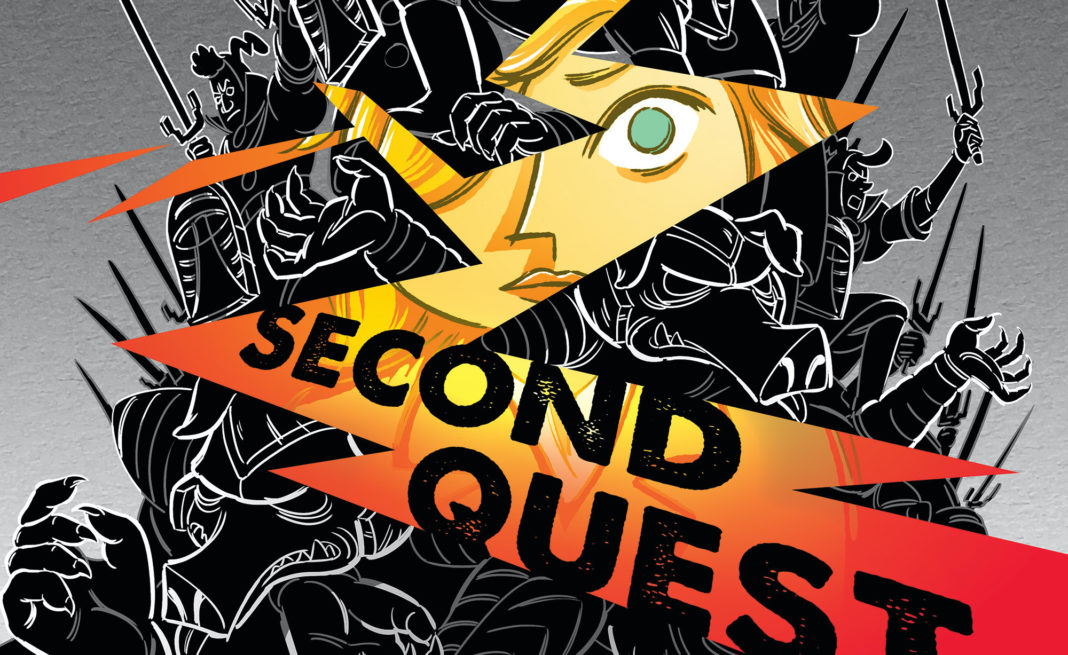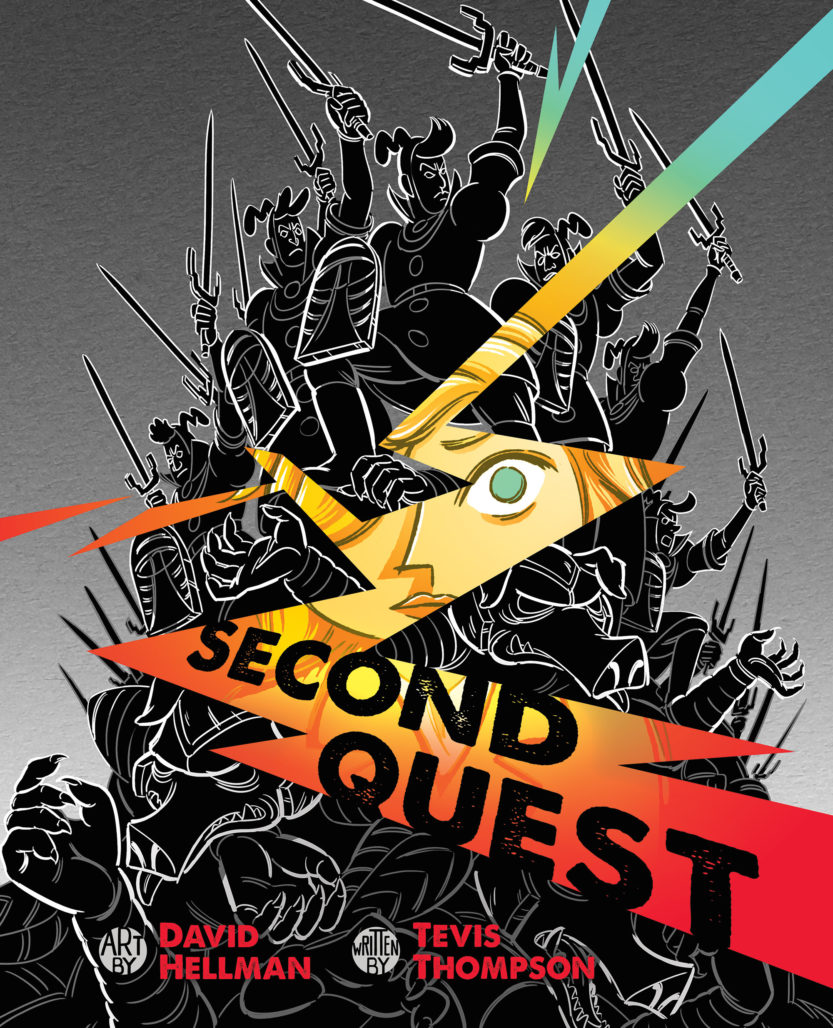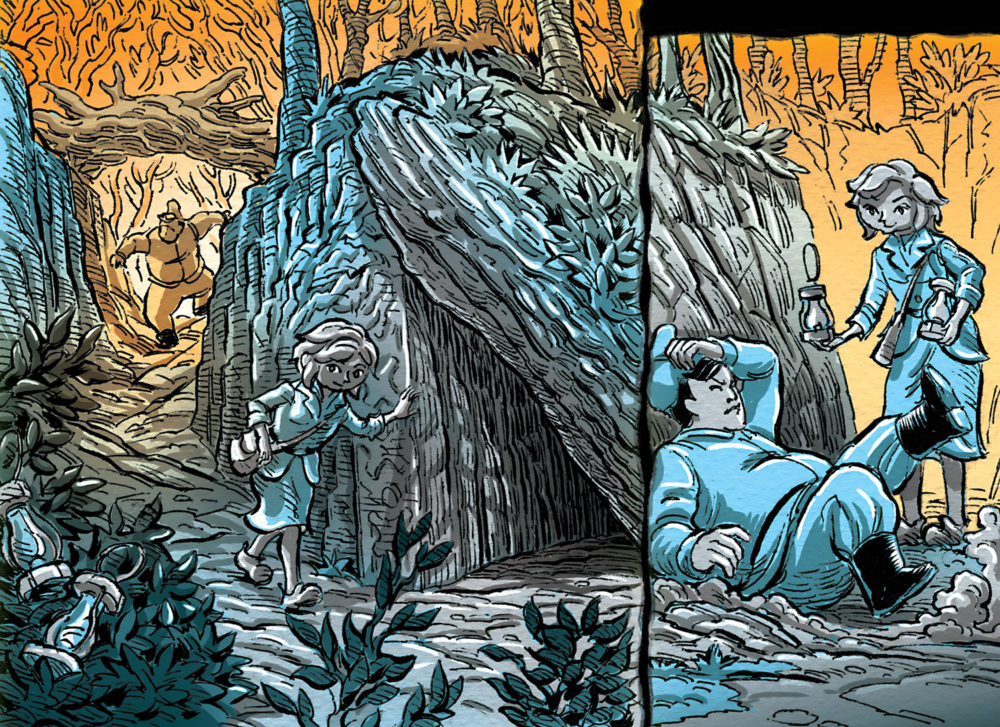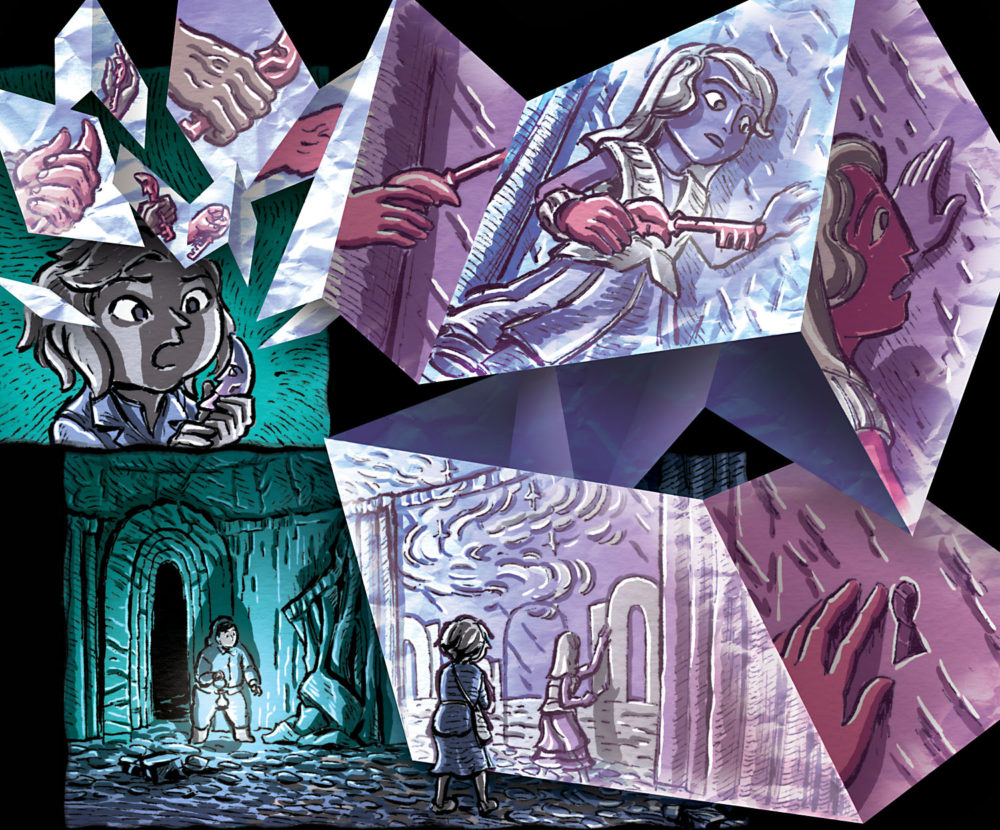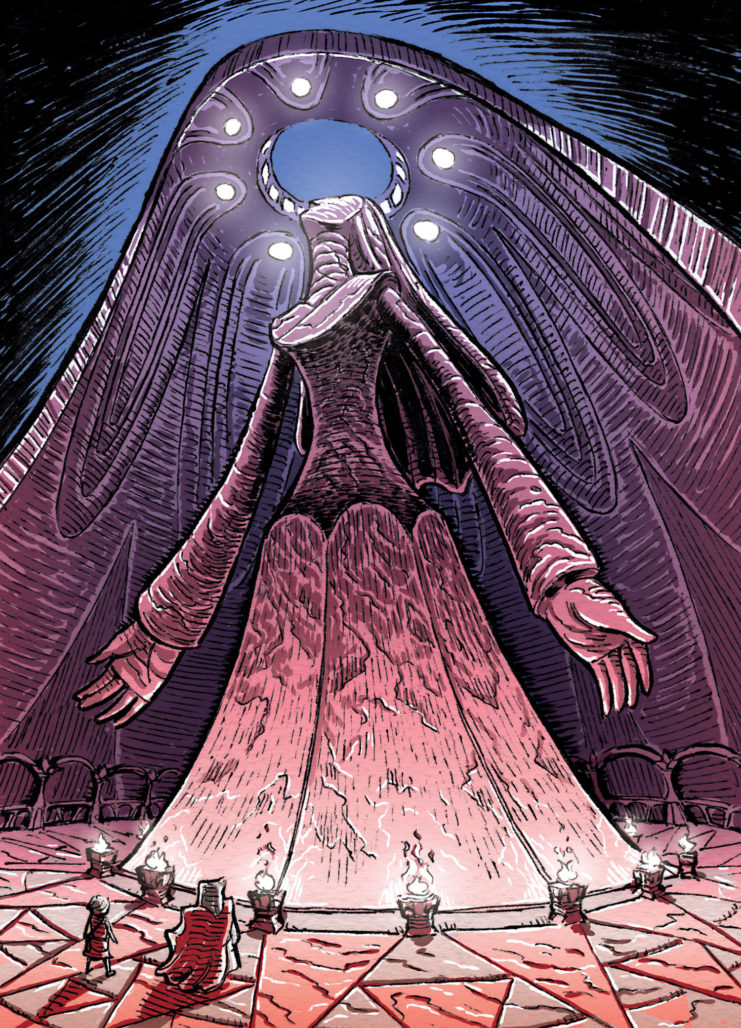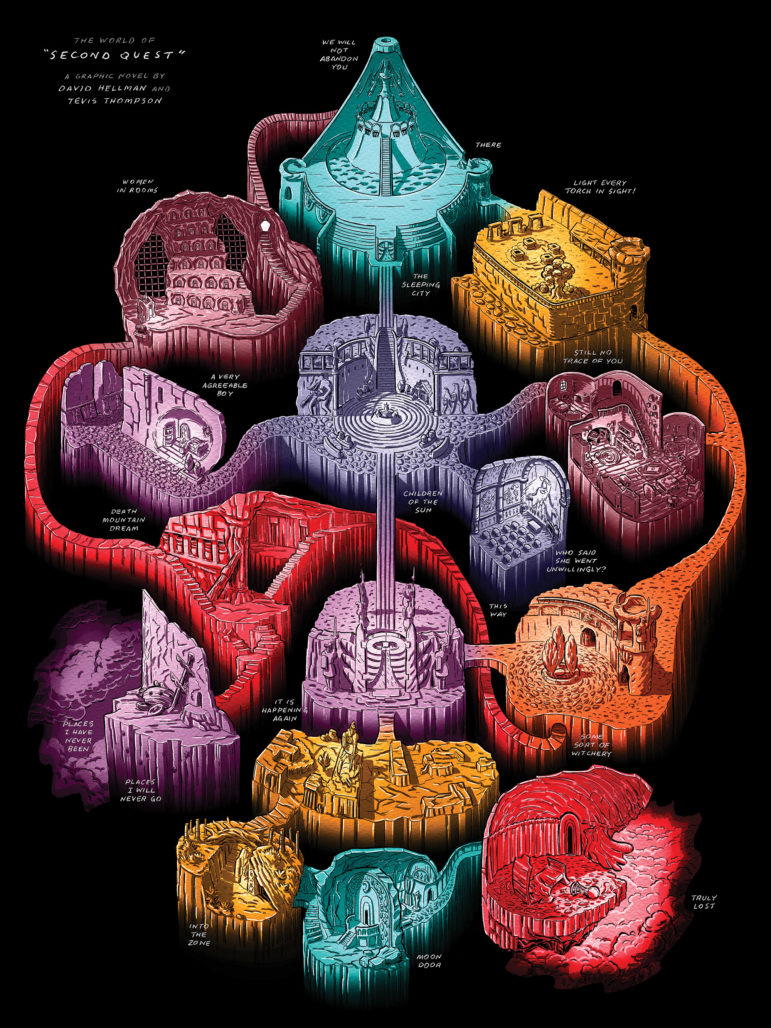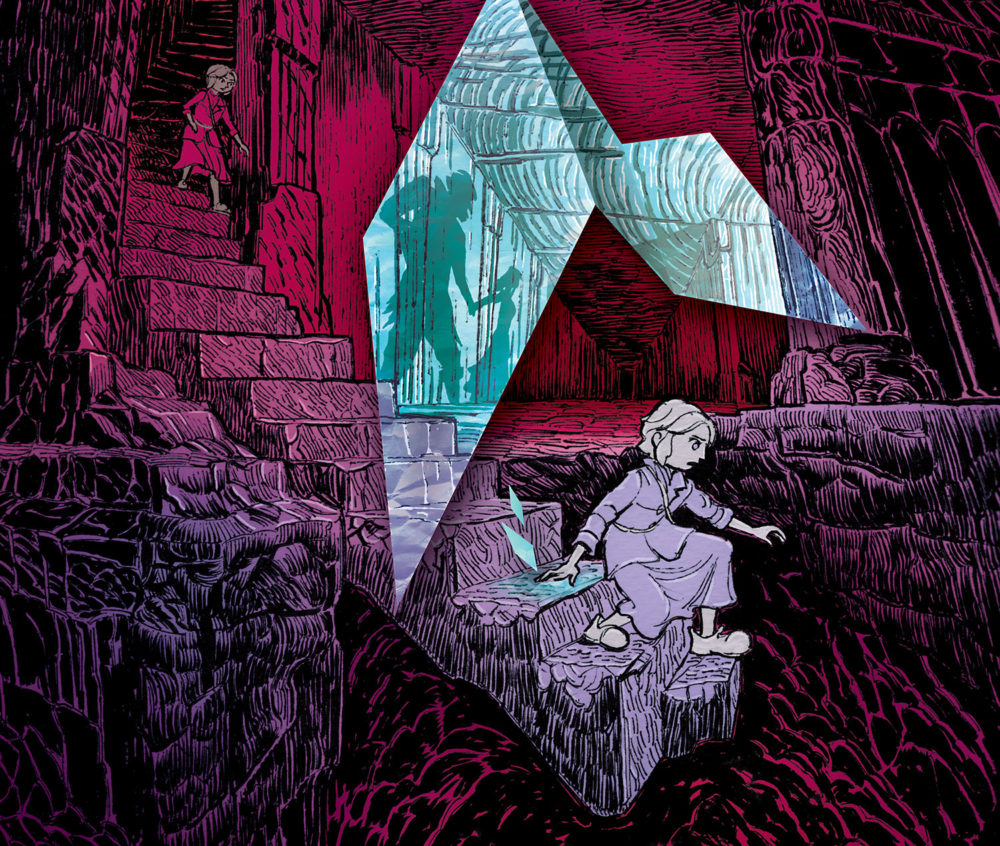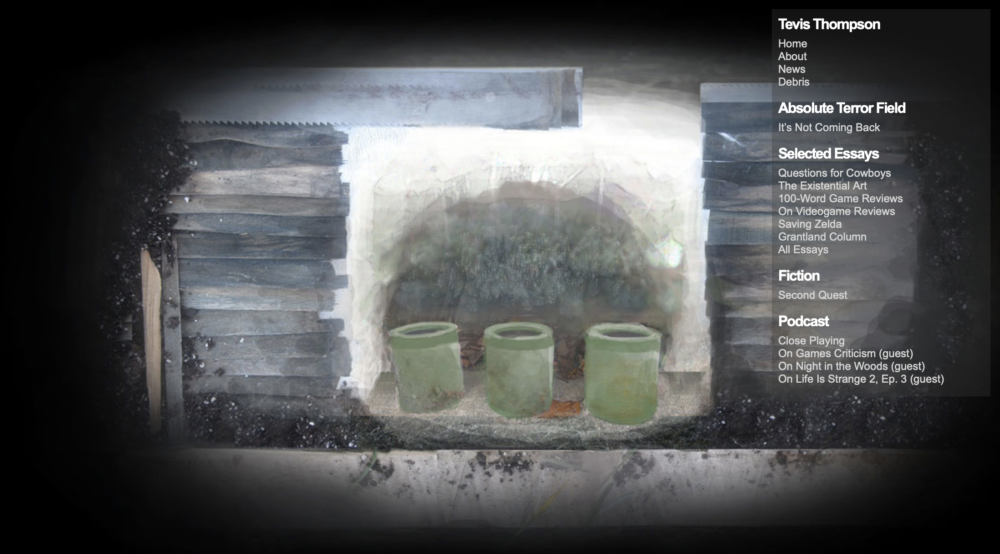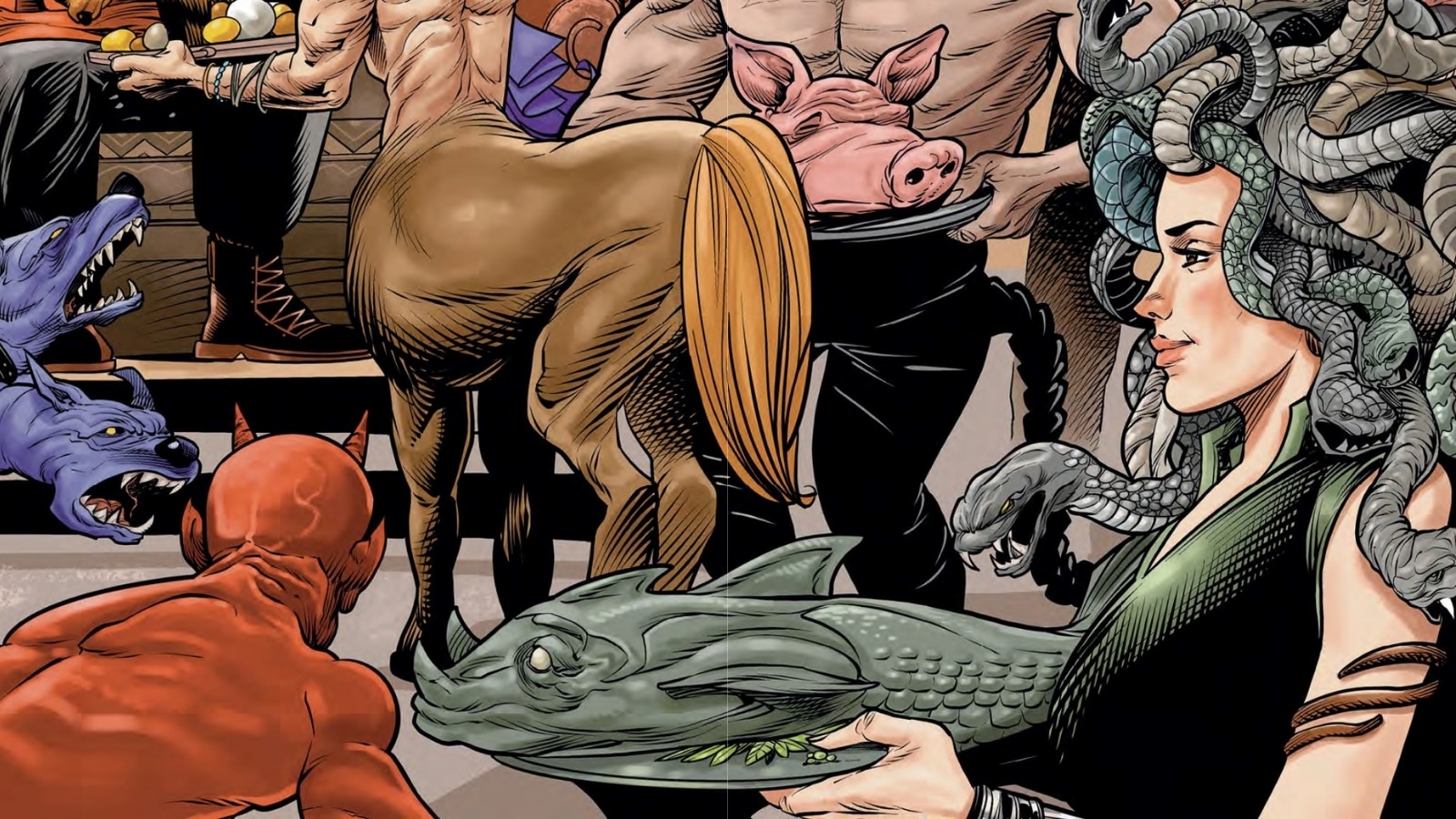Tevis Thompson has had a very interesting journey from critic to author. He amassed a following through his analysis of video games, much of which often challenged the art form to reach the potential Thompson knew it was capable of. Perhaps his most famous piece is 2012’s “Saving Zelda,” which argued that the Legend of Zelda series hadn’t been great for a long time.
A few years later, Tevis’ channeled those feelings into Second Quest, a graphic novel written by him and illustrated by David Hellman, the artist of the award-winning video game Braid. Read on for my interview with Tevis Thompson about the book’s development, adapting to the graphic novel format, and his feeling about the video game franchise that inspired it.
What first interested you in writing Second Quest?
Mostly, it was the chance to work with David Hellman. In early 2012 I wrote a critical essay called “Saving Zelda” in response to playing Demon’s Souls and Skyward Sword. David (who I didn’t know at the time) responded to my essay on twitter by drawing an evocative Zelda landscape that neither of us had actually experienced in years. This started a conversation that eventually led to our collaboration on Second Quest.
Did you immediately know it would be a graphic novel?
David and I originally envisioned something much shorter, a spread of maybe 3 vertical pages. This expanded the more we talked, and given our respective backgrounds in writing and art (and David’s previous work on webcomics like A Lesson Is Learned But The Damage Is Irreversible), a short graphic novel seemed like an obvious fit.
Did it take some time to learn how to tell a story through comics or did you find it fairly intuitive?
We experimented a lot. I’d never written a script for a graphic novel before, though I’d read tons (big influences for me were Chris Ware, Shaun Tan, and Lynda Barry, as well as Sandman), and finding the right balance of detail and layout instruction while making sure David felt the freedom to explore his own visual ideas was tricky. But through continual adjustments and revisions over time, we found a good rhythm.
An additional complication came with our desire to develop non-traditional, sometimes labyrinthine reading paths across each page. Since we’d both long felt that recent Zelda titles’ handholding took away from the free exploration we’d enjoyed in earlier titles, we wanted to have our reader also find her own way through the panels, discovering routes and secret connections herself. This proved challenging because we were telling a fairly linear story and didn’t want to short-circuit narrative pleasures with too many arduous maze-like pages. I think we found a good balance in the end, but it wasn’t easy getting there.
Second Quest really transformed from the comic originally described in the Kickstarter. What inspired those changes?
Honestly, it’s hard to remember. There were no single moments of transformation. Our process involved a constant back and forth as we discussed every aspect of the book. The longer we worked on it, the further away we got from revising/critiquing Skyward Sword and the more Second Quest became its own thing. The story, the characters, the visual style just all developed their own identity the longer we worked on it. Which, for new collaborators, felt pretty natural.
Did writing the graphic novel help you wrestle with your mixed feelings about the Legend of Zelda series?
In part. My original essay “Saving Zelda” did some of that work. Second Quest offered a chance to explore those feelings in a different form and draw out some of the connections between how we play games and how we live in the world. The conservative island mentality in our story is everywhere. In videogame culture, among Trump supporters, in the widespread xenophobia and racism and bigotry that are causing such profound harm to vulnerable people across the world. I wrestle with this reality every day, and there is no end in sight.
As for Zelda, I think the series is half-saved these days. Breath of the Wild addressed many of our criticisms, particularly with regard to its sense of adventure and being in a world. But the series still hasn’t found a way to do right by Zelda herself or really challenge its own sexist assumptions. Meanwhile, other series that were doing well when I wrote my original essay now need saving (Mario is at a low point with Odyssey, and the Souls series has run itself into the ground with its direct sequels and offshoots like Sekiro). But so it goes with gaming.
Editor’s note: Tevis more fully dives into his thoughts on Breath of the Wild in this blog post.
I do find hope in other recent games, though. Titles like Subnautica, Witcher 3, and Death Stranding, as well as Connor Sherlock’s walking simulators and Adam Robinson-Yu’s A Short Hike, offer profound and thrilling new ways of inhabiting game worlds. And there’s a whole generation of designers coming that’s been raised on Minecraft. Even the first two years of Fortnite have offered some radical new ways to think about landscape storytelling and the irreversibility of time in gaming.
Inside and outside of Zelda, there are still a lot of worlds left for Azalea and her sisters to explore.
Instead of traditional comic book dimensions, the pages are sized to fill the screen on a tablet. Did you expect digital to be the primary way readers consumed the graphic novel? Did that end up being the case?
We weren’t sure initially what the spread would be between physical and digital readers. Over time it seems the book has outsold the ebook, though more people may have read Second Quest digitally because the ebook comes with every physical copy and also because of the ebook’s inclusion in some digital bundles). As for page dimensions and sizing for the screen, David could really speak to that better than me.
How did Fangamer assist you in the production, marketing, and distribution of the graphic novel?
Fangamer was great. They were completely responsible for the production of the physical book, and they worked with us over many months to get the details right. They fulfilled all rewards for our Kickstarter backers and also provided initial distribution for the book through their warehouse and website. Distribution beyond this, as well as marketing, was up to me and David.
As far as I can tell, Second Quest is your only work of fiction. What’s kept you from creating more?
I haven’t stopped writing fiction, but I haven’t finished anything recently that I’ve felt ready to publish, either. I have a huge writing backlog, actually. I’ll have more essays and experimental short pieces out in the near future, as well as a game memoir, but I also hope to publish a non-graphic novel in the next few years as well.
Thanks to Tevis Thompson for participating in a really enlightening interview. You can read more of his critical analysis on his website and purchase Second Quest here.
Matt Chats is an interview series featuring discussions with a creator or player in comics, diving deep into industry, process, and creative topics. Find its author, Matt O’Keefe, on Twitter and Tumblr. Email him with questions, comments, complaints, or whatever else is on your mind at [email protected].


